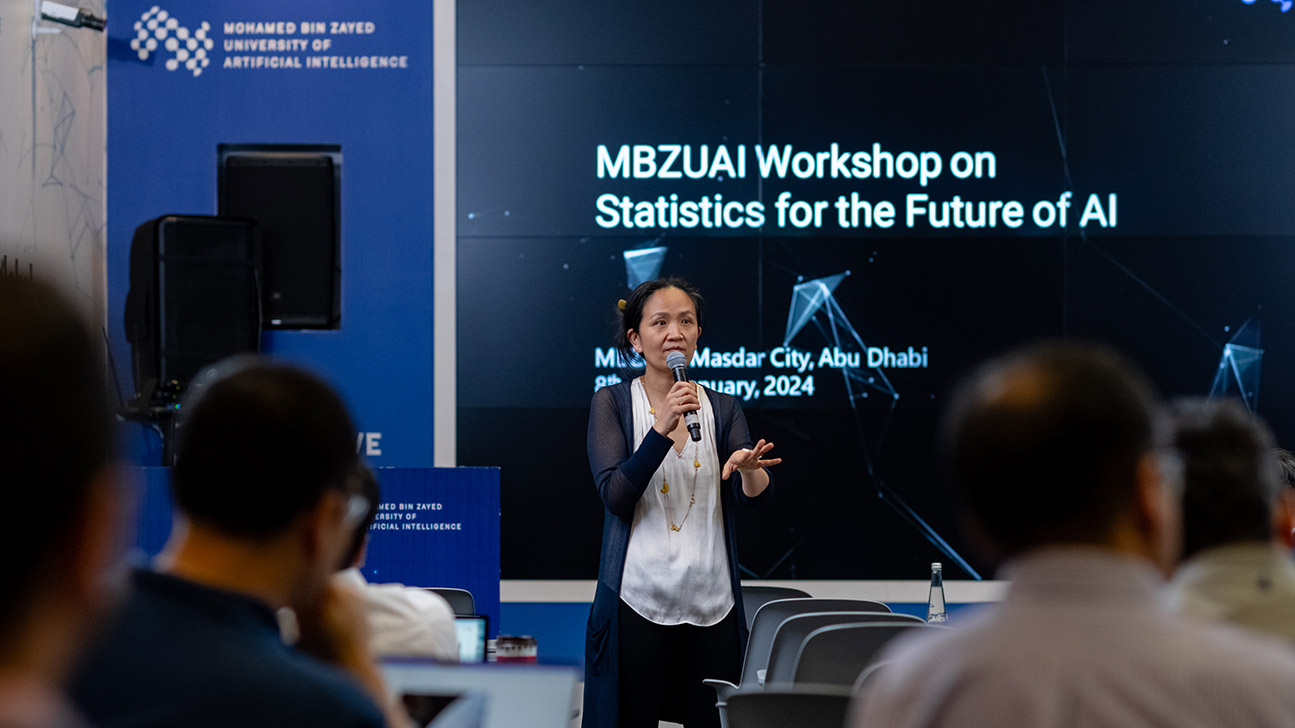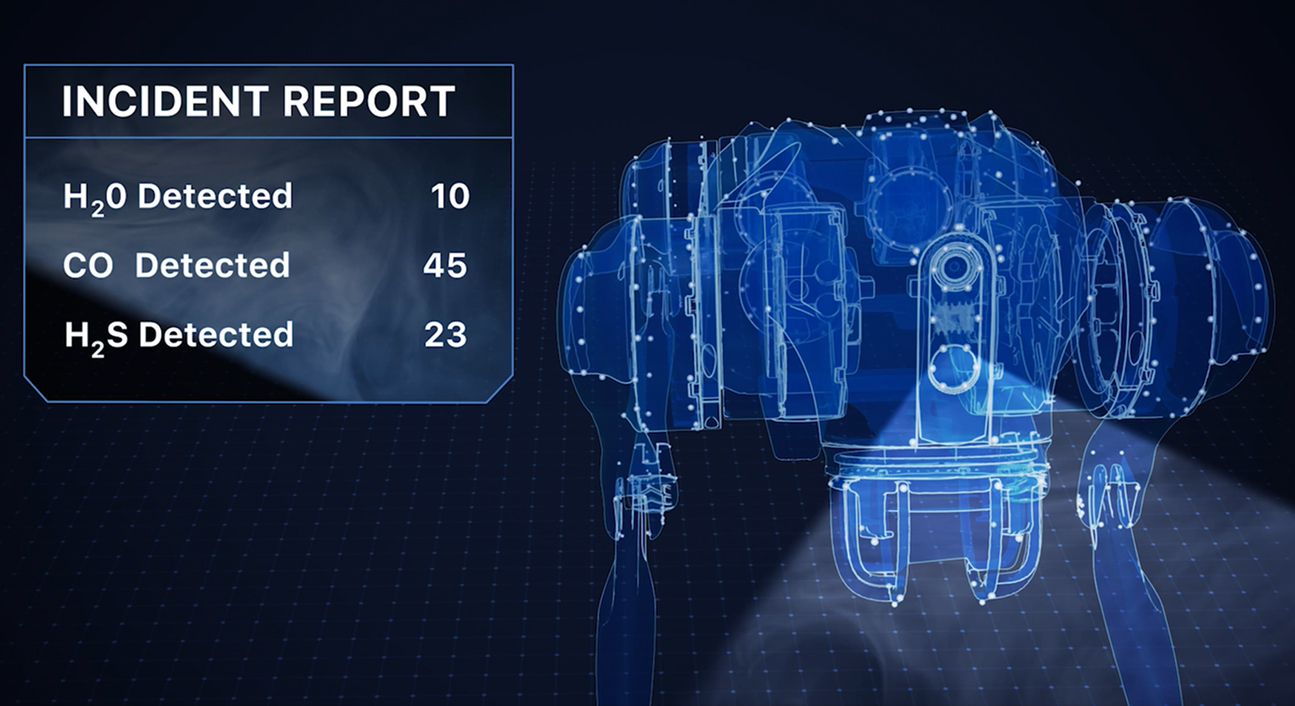Data diagnostics: AI and statistics in computational biology and smart health
Wednesday, January 24, 2024

Statistics and artificial intelligence are set to bring about major innovations in the fields of computational biology and smart health.
Heping Zhang is Susan Dwight Bliss professor of biostatistics, professor in the child study center and professor of statistics and data science, and professor of obstetrics, gynecology and reproductive sciences at Yale University. He is also an affiliated faculty of the Yale Institute for Global Health.
Zhang chaired a segment dedicated to computational biology at the recent AI Quorum workshop held at MBZUAI, which explored the challenge computational biologists face in balancing insights that can be gleaned from biological data with uncertainty that is inherent in the data.
This uncertainty, or noise as it’s called, poses challenges to scientists as they try to develop connections between biological information and health outcomes. “We develop ways to take noisy data and create a story with it in order to understand how the brain functions or how genes play a role in the regulation of a certain disease,” Zhang said.
Cracking the code

Professor Heping Zhang
For example, while the genetic information that is stored in the form of DNA is generally stable over time, the process by which proteins are synthesized from DNA is complex, and there are many environmental and biological factors that contribute to it.
“We often look at genetic markers and consider how they relate to disease, but markers don’t necessarily correspond to a particular biological function,” Zhang said. “A marker is like a mailbox on the street, in that it indicates where someone lives, but it doesn’t tell us who is in the house.”
Zhang cited a presentation by Xihong Lin, professor of biostatistics at the Harvard T.H. Chan School of Public Health, and her recommendations for building an ecosystem in which statistics and artificial intelligence could be used to improve scientists’ understanding of the relationship of between genome sequences and biological functions. This is currently challenging due to a variety of reasons, including the lack of a centralized data infrastructure.
Watch Xihong Lin’s talk:
As it relates to particular diseases, Zhang believes that statistical learning together with artificial intelligence can help scientists gain a better understanding of the role genes play in neurological diseases, like Alzheimer’s. “Genomic data are massive and image data from brain scans are even bigger because they exist in several dimensions and we need to make sense of the connections between different parts of the brain,” he said. “We can use artificial intelligence to process these huge volumes of data and help us make sense of them.”
Wearable wisdom
Another area of discussion at the workshop was smart health, an emerging area of innovation that uses AI-assisted technology like wearables to collect real-time data, analyze it to extract relevant information and develop insights about people’s health. The smart health session was chaired by Peter X. K. Song, professor of biostatistics at the University of Michigan School of Public Health.
Song believes that wearables provide a huge amount of valuable information that can be processed by artificial intelligence. “In the past, we used to rely on patient questionnaires that would ask them to report information about their behaviors, diet or sleep quality, for example,” Song said. “But people have a hard time recalling info from the past and now with wearables we are able to get precise measurements of health conditions in real time to deliver better therapeutic interventions and health management suggestions.”
The smart health sector is growing rapidly. In 2020, $14 billion was invested in smart health startups in the U.S., Song said. The technologies that have been developed have ushered in a huge wave of data that can be used for analysis. Song emphasized, however, that a major hurdle is transforming this data into actionable medical knowledge, a major theme of the smart health section of the the workshop.

Professor Peter Song
One example of a smart health innovation that is having a positive impact on people’s lives are continuous glucose monitors. These devices provide real-time readings of glucose, a sugar that circulates in the blood. This allows individuals, particularly those with diabetes, to see their glucose levels at any given moment.
Constant monitoring not only gives immediate insights but also shows trends in glucose fluctuations, alerting users to potential highs or lows in blood sugar that can be dangerous. For people who require injections of insulin, the integration of glucose monitors with insulin pumps facilitates automated insulin delivery, with results that are have been shown to be better than those obtained by manually monitoring sugar levels and injecting the relevant amount of insulin.
In another application of smart health, Song praised the novel approach of dynamic treatment regimens using wearables to facilitate smoking secession program developed by Susan Murphy, Mallinckrodt professor of statistics and of computer science and associate faculty of the Kempner Institute at Harvard University.
Watch Susan Murphy’s talk:
Song also noted a presentation by Chengchun Shi, associate professor of data science at the London School of Economics and Political Science, on the concept of reinforcement learning, a type of machine learning where an algorithm learns to make decisions by performing actions in an environment and receiving feedback about those actions over time. Reinforcement learning will play an important role in the field of smart health as it progresses, Song said.
Watch Chengchun Shi’s talk:
While Song foresees a future where machines enhance human capabilities, he also cautions about data privacy and the need to consider the value of personal data. “On the one hand, we need to figure out how to protect privacy, on the other we need to figure out what all of this data is worth,” he said.
But wearables are here to stay, and they will provide health benefits and drive innovations in health care and health management to people in the future. “There are many tasks that machines can do better than humans can do, and there will more of these tasks identified going forward,” Song said.
Related
Intelligent, sovereign, explainable energy decisions: powered by open-source AI reasoning
As energy pressures mount, MBZUAI’s K2 Think platform offers a potential breakthrough in decision-making clarity.
- case study ,
- ADIPEC ,
- K2 Think ,
- IFM ,
- reasoning ,
- llm ,
- energy ,
- innovation ,
- research ,
Cooling more people with fewer emissions: intelligent, efficient cooling with AI and ice batteries
MBZUAI's Martin Takáč is leading research to develop an AI-driven energy management system that optimizes the use.....
- energy ,
- cooling ,
- solar ,
- ADIPEC ,
- sustainability ,
- innovation ,
- research ,
Faster, safer and smarter inspection: AI-powered robotics for industrial safety
MBZUAI's autonomous robotic system, LAIKA, is designed to enter and analyze complex industrial environments – reducing the.....
- research ,
- autonomous ,
- case study ,
- innovation ,
- infrastructure ,
- energy ,
- industry ,
- robotics ,


